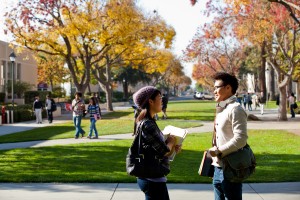































 This six-part series focuses on transformation of the traditional higher education system in the United States. This part focuses on the fact that universities are more similar than they are different. Universities in the U.S. share common challenges: inadequate access, dated teaching methodologies, and perceived irrelevance of our current programs.
This six-part series focuses on transformation of the traditional higher education system in the United States. This part focuses on the fact that universities are more similar than they are different. Universities in the U.S. share common challenges: inadequate access, dated teaching methodologies, and perceived irrelevance of our current programs.
First, we have a problem of access: We simply do not have enough capacity to meet demand. In the U.S., there were 3.2 million graduating seniors in the class of 2012, 73 percent of whom believed they needed stillmoreeducation to obtain higher-paying jobs. Since 2007 the number of international students has also increased by more than 20 percent. And, competition is increasingly stiff for places in top academic universities: Harvard accepted only 5.9 percent of applicants, and Yale accepted 6.8 percent. With only 4,000 higher education institutions in the U.S., it's easy to see that we lack the capacity to continue delivering against the increase in demand. (U.S. Department of Education and theNew York Times)
Second, yesterday's teaching methods aren't effective with the students of today and tomorrow. In a world that is increasingly digital and connected, students have a low level of engagement. Most university instruction hasn't changed much; globally, professors are mostly educating students as Aristotle did over 2,000 years ago. In the U.S., college presidents are being questioned. Case in point: the University of Virginia president was fired over a disagreement on approaches to changing higher education. This pressure on leadership to change -coupled with the very nature of instructional methodology -is reaching a breaking point. At the same time, New, Massive Open Online Courses (MOOCs) are showing that different approaches really can work. This is forcing colleges and universities to examine closely the current mode of traditional lecture courses.
Third, there is a perception that higher education is increasingly irrelevant. We are facing a highly complex global economic environment that forces our institutions of higher learning to turn out graduates who can work in jobs to make our countries more economically and socially competitive. We have to adapt quickly to place our students in positions demanded by companies that comprise the network of our economies. This requires speed, agility, an understanding of key market transitions, and the direction that our companies are taking. Cisco shares this interest in obtaining employees who can comprise a competitive, creative, and effective workforce.
We believe that by thoughtfully applying technology, and by sharing where such applications are working well, we can help to more effectively address these shared challenges and transform higher education systems globally.
Find out more about the challenges that higher education experts share in our upcoming Virtual Forum for Education Leaders on March 19. Register for the event here: www.inexpo.com/events/ciscoeduforum
 Горячие метки:
higher education
transformation
education technology
Горячие метки:
higher education
transformation
education technology